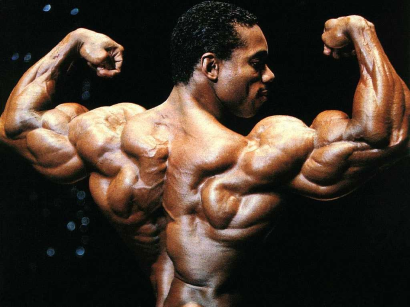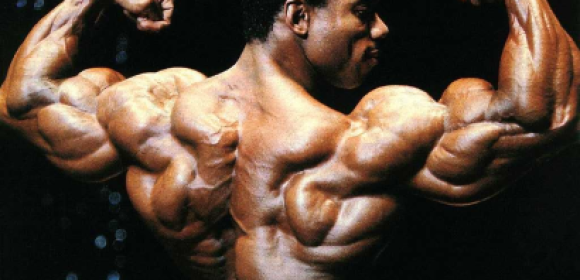You know building muscle is essential to help you accelerate fat loss.
When you’re trying to achieve this goal, both your workouts and diet play important roles. Now sure, there are plenty of ways to screw this up.
But today that’s not the topic. We’re going to talk specifically about muscle building workouts.
In theory, bodybuilding workouts make sense for gaining muscle as quickly and efficiently as possible, right?
“Build” your “body” = gaining muscle.
But should you be following a traditional bodybuilding program to build muscle, transform your body and accelerate fat loss?
Well, not exactly.
It’s officially old school now. And I’m actually shocked it’s still popular, and people follow competitions and idolize professional bodybuilders.
Whether you like it or not, bodybuilding has been around for donkeys years and splashed across every fitness magazine, website and forum.
Pick up any fitness magazine from the last 20 years, and you’ll quickly see that bodybuilding is perhaps, THE most popular workout routine for muscle growth that was ever created.
What is a traditional bodybuilding workout program anyway?

Let’s get a definition to start with, so we’re all on the same page.
“Bodybuilding” is not a single workout routine. There’s a common theme and characteristics that make up a bodybuilding routine, not just a single workout.
Here are the characteristics:
- A training program that uses low frequency per body part. You train each muscle group just once per week.
- Typically, you split body parts and train a different part on a different day. That’s where “National Chest Day” (aka Monday) and “Arm Day” (aka Friday) came from.
- In each of these workouts, you employ a high volume of exercises that hit the crap out of your muscle from every possible angle.
- The rep range varies from 8-15 reps for 3 sets. A pyramid set structure is often used.
- Rest periods are varied, but it can range anywhere from 1-3 minutes between sets.
- Often times, you will train the specified muscle group to failure. Sometimes beyond failure.
- The main focus is trying to fatigue and isolate the muscles as much as possible using isolation exercises and advanced methods, like drop sets, forced reps, and partial reps.
- Changes are made frequently to “shock the body” and “keep the muscles guessing”. This generates more pump and soreness the next day.
- Progressive overload may or may not be employed. It’s often an afterthought compared to everything else on this list.
Why Bodybuilding fails
Using a traditional bodybuilding program is not the optimal way to build muscle.
I know, I know. That sounds completely incorrect. It sounds wrong and the total opposite of what most people think or would ever believe.
So brace yourself. Here are 7 reasons why traditional bodybuilding fails:
1. Low frequency training of isolated muscle groups is redundant
This could be the #1 reason why bodybuilding fails.
Research shows that higher frequency training (meaning you hit each body part 2-3x per week) as opposed to low frequency training (you hit each body part once every 6-7 days), is superior for muscle gains and improvements in strength.
This means you don’t need to be splitting body parts for different days, especially for 5-7 days. In fact, you’re more like to de-train over that long stretch of time, meaning you’re back to square one by the time chest day comes around again.
It’s not to say split routines don’t work at all – in fact they do IF programmed and executed correctly. But the typical bodybuilding routine is NOT executed intelligently.
Most people in the real world don’t need to dedicate an entire day to one particular muscle group. So total body workouts, that use multiple muscle groups at the same time, are more appropriate for helping you reach your goals.
Check out this tried and true strength program.
2. It’s far TOO time consuming
Do you have an extra 1-2 hours, 5-6 days per week to devote to the gym? That’s not to mention the time it takes to get to the gym and actually start.
What happens if you miss a day? That’s a whole muscle group you’re missing out on, or you have to try make up for.
And that’s just the training side of the equation. Wait till you add the food prep time.
Obviously, this makes the program difficult to stick with – if you actually have a life.
3. Is there muscle beneath the fat?
Here’s the thing…
Bodybuilding may seem like a great idea, but if the muscle is covered with fat, you won’t see the results of your hard work.
I’ve met guys who start their “bulking” phase – which is the fancy, tough way of saying gaining muscle/weight – but then quit and fail to follow through in the “cutting” phase where the magic happens and you get lean and shredded.
The end result?
It’s not sexy.
4. It’s Dangerous for your joints
Typical bodybuilding routines are not only ineffective, but they are injury causing. Take for example this split day routine:
Monday: Chest
Tuesday: Back
Wednesday: Shoulders
Thursday: Biceps/Triceps
Friday: Legs
Saturday: Off
Sunday: Off
Most people would see a 5-day bodybuilding routine – I see shoulder injuries. And probably elbow issues too.
Why?
While it looks as though every muscle group is being trained once per week, your joints are getting hammered every single day. Particularly the shoulder girdle, that is heavily involved in every chest, back and shoulder exercise.
Add in another old school training method – pushing to muscle exhaustion and failure – and you’re on the highway to the ER.
Research shows that stopping 1-2 reps short of failure, is JUST AS effective for building strength as going to failure, only you don’t have the high risk of injury.
5. Progress Overload is an afterthought
How do you build muscle?
Progressive overload. It’s strategically doing more work over time to reach your goals. This includes the combination of volume, intensity, frequency, splits, rep ranges, rest periods, exercise selection – it’s a LOT. And it’s really important for getting results.
But in the absence of smart programming that incorporates progressive overload, all this is just “stuff” and it’s meaningless on it’s own.
And it’s all the other “stuff” that gets priority in the typical bodybuilding routines. Progressive overload is an afterthought.
6. Cardio Cardio Cardio
Steady state cardio. Is The Enemy.
You may have seen female bodybuilders at the gym early in the morning, getting in their 30, 45 or even 60 minutes of cardio on the dreadmill in a “fasted” state.
Again, this is outdated. But you already knew that! ![]()
7. Roid Use, Roid Rage (and the Side Effects)
Drugs are bad, kids. The use of steroids was rampant in the 80’s and 90’s – and I’ve seen the after effects 20 years later.
My first boss at the private studio in NYC was a former bodybuilding champion. He was in his prime in 1989, and whether or not he used roids is uncertain. I wasn’t there. ![]()
But at the young age of 50… his body is falling apart. Knee, shoulder, lower back. Every day there was pain and frustration.
That’s NOT what training should do to you.
Don’t even get me started on the supplements. Most are dodgy, and not regulated by the FDA (ha, what actually IS regulated by the FDA…?!)
But here’s what really gets me going…
Often I’ll see young women in the gym working out with a “bodybuilding” obsessed trainer. Clearly, this gal has NO desire to be bodybuilder, yet the trainer is using these old school techniques and selling the “you need to train with me 4, 5, or even 6 times per week if you want to lose weight.”
WTF?
Bodybuilding is not a one size fits all solution. And this guy obviously hasn’t read a textbook in the last 20 years.
Plus, when was the last time you said “wow, that bodybuilder is really sexy”?
Exactly.
So what does work for building muscle?
If you’re a beginner, a basic 3 day total body program that is bodyweight only is the best way to train. Keep it simple.
But if you’re intermediate to advanced, then here’s what you should try:
- Train each body part body with moderate frequency, like once every 3rd day. Use a workout split that is balanced and allows this frequency.
- Use a moderate volume, aiming for 30-60 reps per big muscle group – and even less for smaller muscles. Choose 1-2 exercises per muscle group, per workout. (Big muscles get 2 exercises, smaller muscles get 1).
- Do big compound movements, like squats, deadlifts, presses, rows, pull ups and then fill in rest with isolation exercises.
- Use a combination of low and high reps. The 5-8 rep range is ideal for compound exercises that use big muscles groups, and 8-15 reps is great for smaller accessory muscles (like your biceps).
- Do straight sets, not an advanced pyramid. Don’t focus on fancy advanced techniques, just stick with getting the basic fundamentals right.
- Take a 2-3 minute rest between lower rep exercises, and 1-2 minutes between higher rep moves.
- NEVER train to failure. It’s dangerous!
- Don’t change things too frequently, so your body gets the right adaptation.
And of course, you primary focus should be on creating progressive overload. Just like in my strength training plan, the Bodyweight Strength Solution…
It’s challenging (but achievable and SIMPLE) bodyweight movements.

==> Get the Check out the Bodyweight Strength Solution
And don’t worry… there’s no getting bulky!
The Big Take Away
If your primary goal is building muscle, you should follow these suggestions above and forget about traditional bodybuilding programs. Keep it simple.
And don’t take drugs kids. It’s not worth it.
Your Coach,
KV















